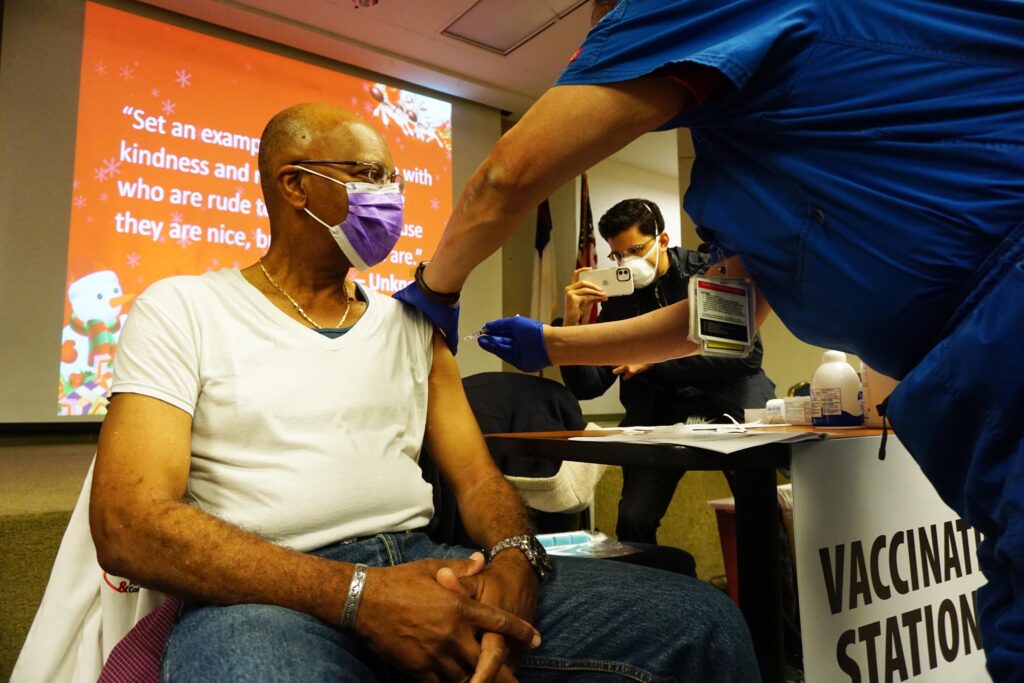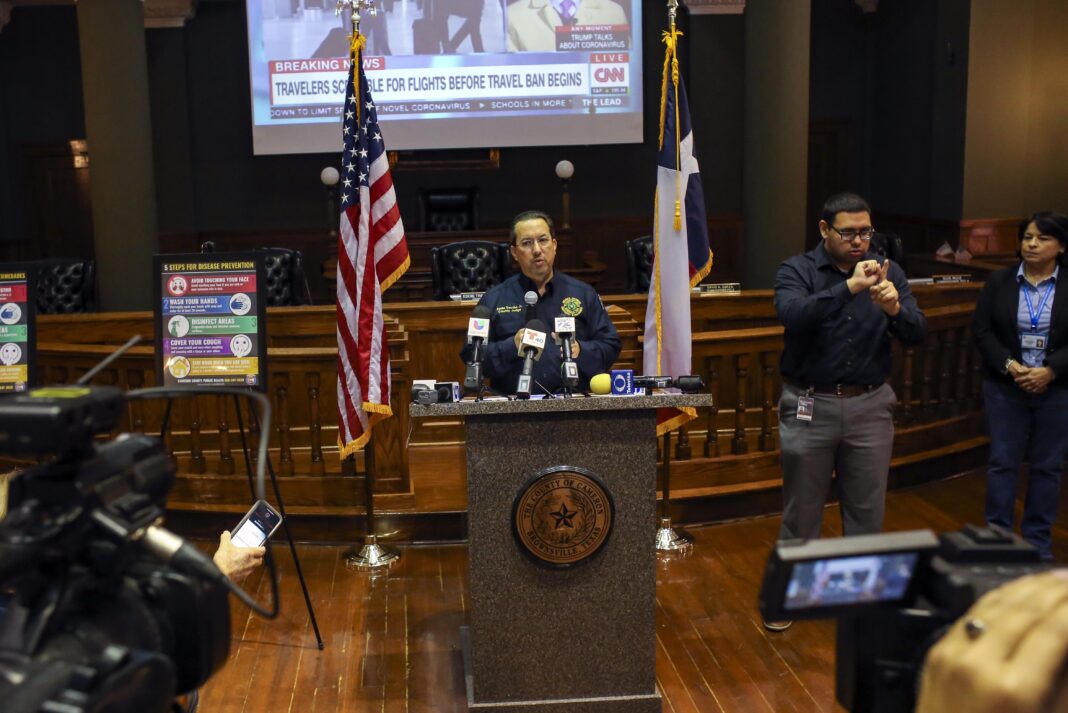In the mid-1970s epidemiologist Dr. Joseph McCormick was sent by the Center for Disease Control, now the Centers for Disease Control and Prevention, to Brazil to help get control of a deadly meningitis outbreak sweeping the country.
He was involved in the massive vaccination campaign against the disease, which McCormick — founder of the UTHealth School of Public Health in Brownsville — said was far worse than COVID-19 and caused “total panic” among the Brazilian population.
“The death rate in that one was about 20 percent to 25 percent, and there were probably 200,000 or more cases of it,” he said. “It was pretty awful. Most people that got that disease got hospitalized.”
But Brazil’s government took swift action, deploying 80 million vaccine doses supplied by the French to vaccinate the population as quickly as possible, McCormick said.
“They had vaccinators at every corner,” he said. “They had the military, they had everybody involved, and they vaccinated 80 million people in a matter of a couple of months.”
This time, Brazil has failed miserably to get control of a deadly disease, with highly transmissible variants potentially posing a threat to countries far outside its borders and President Jair Bolsonaro continuing to downplay the severity of the outbreak and promote quack cures. The result is that Brazil has the second highest number of COVID-19 deaths among nations, second only to the United States.
The first case of the virus confirmed in this country was on Jan 21, 2020, involving a Washington state resident recently returned from Wuhan, China. Since then, the United States has seen 29.1 million cases and 525,000 related deaths. In Texas, 2.7 million people have tested positive and 45,570 have died. In Cameron County, which confirmed its first COVID-19 case on March 19, 2020, a total of 37,741 residents had been infected as of March 8 and 1,518 had died from COVID-19 related causes.
McCormick pins the blame on the Trump administration’s lack of serious action to mobilize against the pandemic, and the chaotic roll-out of early vaccination efforts locally on the fact that states and local communities were left to figure it out on their own with virtually no help from the federal government.
“The previous administration promised 20 million doses of vaccine by the end of December,” McCormick said. “I’m not even sure we had 2 million, never mind 20.

Vaccination production is ramping up quickly under the Biden administration, however, and a third vaccine, developed by Johnson & Johnson, is on its way to augment the Pfizer-BioNTech and Moderna vaccines already being distributed, McCormick said. The White House recently brokered a deal for the Johnson & Johnson vaccine to be manufactured by pharmaceutical giant Merck, he said.
“We’re going to have tens of millions of doses of this vaccine, and both Moderna and Pfizer are ramping up theirs,” McCormick said. “The president said we’re going to have enough vaccine by May to vaccinate everybody, at least one dose.”
Ten days after receiving just the first dose of either the Pfizer or Moderna vaccine, a person has protection from severe disease “and you’re probably reasonably protected from infection,” he said.
Beyond the second Moderna or Pfizer doses, it’s possible booster shots will be needed to address the variants cropping up, McCormick said. The good news is that the tweaked vaccines will require much less testing to be authorized for emergency use by the Food and Drug Administration, since they won’t be much different than the original COVID-19 vaccines, he said.
“The FDA has now said if you are going to make vaccines against these variants you don’t have to go out and do another trial of 60,000 people,” McCormick said. “All you have to do is show biological equivalency. That means kind of a phase one and two type trial where you give the vaccine and then you look at the immune responses against the virus in the laboratory, see whether they’re neutralizing or inactivating the virus. That’s far easier. Now we’re talking about getting 100 or 200 people. That’s a far cry from having to redo the whole affair.”
While the apparent speed at which drug companies were able to develop effective vaccines has drawn a lot of attention, McCormick said it’s because the platforms those vaccines are based on aren’t new. For instance, research on RNA vaccines (like Pfizer’s and Moderna’s) has been going on for 20 years, while the Johnson & Johnson vaccine’s MRNA platform has likewise been around for decades, he said.
“The idea of people saying, well, this is a new vaccine, I don’t know if it’s safe — that’s not the case,” McCormick said. “These platforms have been around. In fact it’s interesting because the MRNA is also being used extensively for research on cancer vaccines.”
McCormick correctly predicted a number of developments over the last year, such as that the virus would exact a disproportionately high price in terms of several illness and death in the Rio Grande Valley because of the high incidence of risk factors such as obesity and diabetes.
He also warned that relaxing restrictions too soon during the pandemic would lead to deadly surges such as the one that swept the Valley in July and August, which is why McCormick is unhappy with Gov. Greg Abbott’s order last week lifting the state’s mask mandate and allowing businesses to operate at 100 percent capacity as of today (March 10) — especially with spring break and Semana Santa coming up.
But there is at least one element of the pandemic McCormick admitted he didn’t necessarily anticipate.
“Of all the vaccines we’ve had, we have never had a vaccine where the organism mutated enough to escape the vaccine,” he said. “That’s never happened. This is a new occurrence, but when you look at the type of virus this is, it’s probably not too surprising. …
“We can look at a virus like polio. That’s a virus that mutates like crazy as well. But there are no mutations that make the virus viable, that would escape the vaccine. That’s been the key. Here we have a situation where the virus is still viable and can still replicate. That is new and I’m not sure that I would have predicted that it would have happened so easily.”





